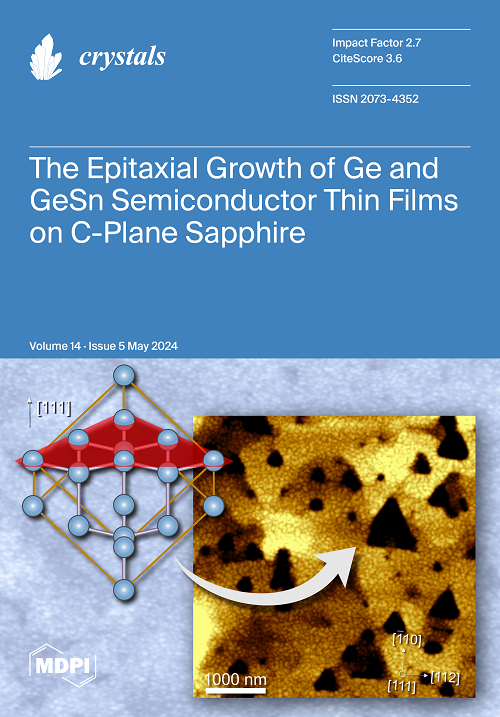Semiconductive Tendency of the Passive Film Formed on Super Austenitic Stainless Steel SR-50A in Acidic or Alkaline Chloride Solutions
IF 2.4
4区 材料科学
Q2 CRYSTALLOGRAPHY
引用次数: 0
Abstract
Stainless steel is widely used in various industrial fields due to its excellent corrosion resistance and mechanical properties. The key to this corrosion resistance is the thin passive film that naturally forms on the metal surface. Passive films are characterized by oxide film theory and adsorption theory, each uniquely explaining the structure and mechanism of the protective film on the metal surface. Research on the semiconductive properties of passive films on stainless steel offers diverse viewpoints, classifying theories into the point defect model and the bipolar fixed charge-induced passivity. Specific changes in passive film attributes that lead to degradation, however, are not fully understood. In this study, we analyzed the inner and outer layers of the passive film on super austenitic stainless steel SR-50A under various conditions in acidic and alkaline chloride environments. The interpretations of these results were based on the point defect model and the bipolar model for the passivation mechanism, and correlations between p-type and n-type semiconductor properties and passivation behavior were examined. The surface of the stainless steel forms a passive film comprising two layers with p-type and n-type semiconductive properties, independent of the pH of the solutions. The corrosion resistance increases as the p-type and n-type semiconductive tendencies become more balanced, consequently enhancing the properties of the passive film.超级奥氏体不锈钢 SR-50A 在酸性或碱性氯化物溶液中形成的无源膜的半导体倾向
不锈钢具有优异的耐腐蚀性和机械性能,因此被广泛应用于各个工业领域。这种耐腐蚀性的关键在于金属表面自然形成的一层薄薄的被动膜。氧化膜理论和吸附理论分别对金属表面保护膜的结构和机理做出了独特的解释。有关不锈钢被动膜半导体特性的研究提供了多种观点,将理论分为点缺陷模型和双极固定电荷诱导钝化。然而,人们对导致降解的无源薄膜属性的具体变化并不完全了解。在本研究中,我们分析了超级奥氏体不锈钢 SR-50A 在酸性和碱性氯化物环境中各种条件下被动膜的内层和外层。对这些结果的解释基于钝化机理的点缺陷模型和双极模型,并研究了 p 型和 n 型半导体特性与钝化行为之间的相关性。不锈钢表面形成了一层钝化膜,由具有 p 型和 n 型半导体特性的两层膜组成,与溶液的 pH 值无关。随着 p 型和 n 型半导体特性趋于平衡,耐腐蚀性也随之增强,从而提高了被动膜的特性。
本文章由计算机程序翻译,如有差异,请以英文原文为准。
求助全文
约1分钟内获得全文
求助全文
来源期刊

Crystals
CRYSTALLOGRAPHYMATERIALS SCIENCE, MULTIDIS-MATERIALS SCIENCE, MULTIDISCIPLINARY
CiteScore
4.20
自引率
11.10%
发文量
1527
审稿时长
16.12 days
期刊介绍:
Crystals (ISSN 2073-4352) is an open access journal that covers all aspects of crystalline material research. Crystals can act as a reference, and as a publication resource, to the community. It publishes reviews, regular research articles, and short communications. Our aim is to encourage scientists to publish their experimental and theoretical results in as much detail as possible. Therefore, there is no restriction on article length. Full experimental details must be provided to enable the results to be reproduced. Crystals provides a forum for the advancement of our understanding of the nucleation, growth, processing, and characterization of crystalline materials. Their mechanical, chemical, electronic, magnetic, and optical properties, and their diverse applications, are all considered to be of importance.
 求助内容:
求助内容: 应助结果提醒方式:
应助结果提醒方式:


